What is Retargeting and How to Use It with Ease
Have visitors ever checked out your website, looked at your products, and left without buying anything? It’s a common challenge.
Getting people to your site is hard, but convincing them to buy is even harder. Most of them won’t return on their own. They get distracted, forget about your brand, or buy from someone else. Without a way to follow up, those potential customers are gone.
So, to paint a bigger picture, imagine that the global retargeting software market is expected to reach $8.87B by 2029. Even so, first-time web visitors only convert 2.4% of the time. Then, why not learn something on the topic and use it to boost your sales?
In this article, you’ll learn what retargeting is, how it helps you bring back visitors through targeted ads, and how to create simple campaigns that turn interest into real conversions.
Table of Contents
What Is Retargeting?
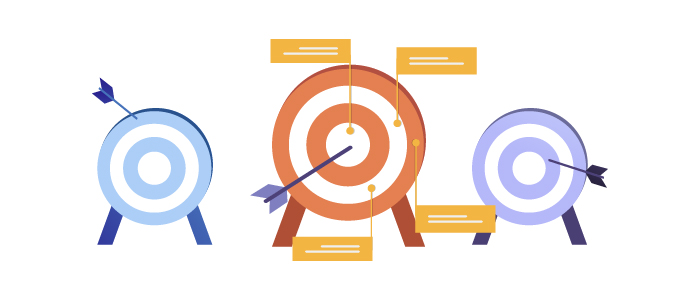
Ad retargeting is when you show ads to people who have visited your website, used your app, or engaged with your content. The goal is to remind them of your product or service and encourage them to complete their purchase or take the desired action.
Think of it as saying, “You showed interest before, and we’re still here, ready when you are!”
How Retargeting Works
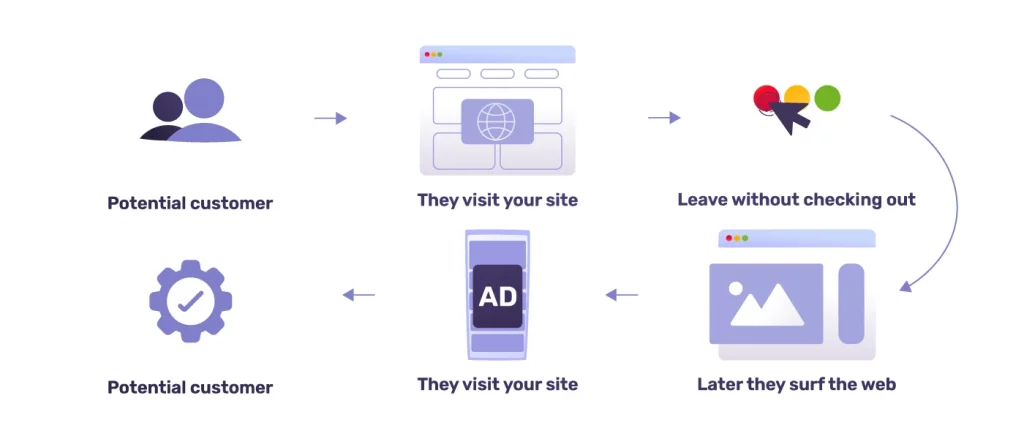
Since retargeting is a dynamic digital strategy, it typically works through pixels and lists. Let’s examine both and see how they can complement your marketing approach.
Pixel-Based Retargeting
A pixel is a JavaScript code snippet you add to your website to track activity and place cookies in a visitor’s browser. Through cookies, ad networks, social media platforms, and tracking programs, you can understand which users made relevant actions for your business and show ads accordingly.
Pixel-based retargeting is based on specific user activities that can lead to conversion. While the data is extracted, you can show programmatic ads to visitors who left your conversion funnel.
Here is pixel-based retargeting in action:
- Jimmy comes to your website;
- Jimmy’s browser now has the JavaScript code embedded in his browser;
- Jimmy continues browsing, yet the pixel signals retargeting platforms, such as Google and Meta ads, to serve customized ads based on his activity.
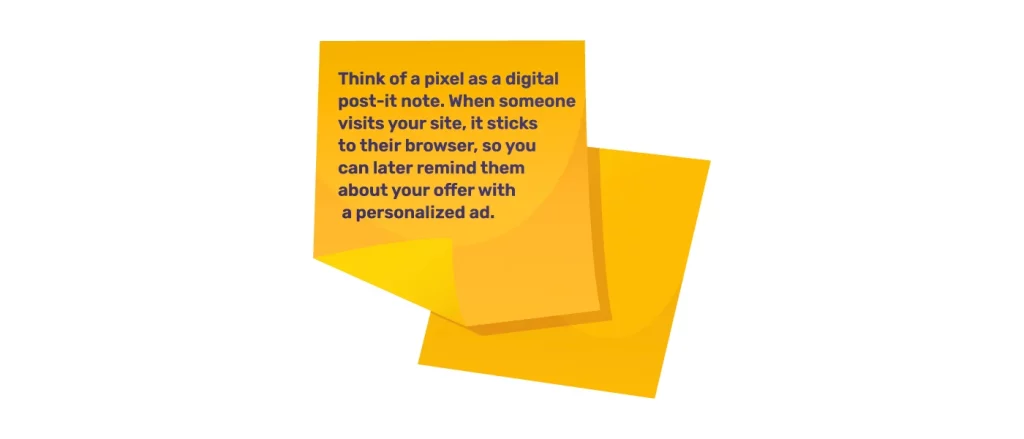
List-Based Retargeting
List-based retargeting implies uploading an existing list to show highly targeted ads to the users of that list. You can upload an email list or lists with user info from a third-party platform. But let’s break it down:
You create and upload a list of email addresses to a platform like Meta, and users are matched based on that list. The platform then retargets the user by displaying specific ads.
Key Comparison: Pixel-Based vs. List-Based Retargeting
The table below outlines the key differences between pixel-based and list-based retargeting to help you better understand how it works:
| Aspect | Pixel-Based Retargeting | List-Based Retargeting |
|---|---|---|
| How It Works | Tracks user behavior on your website using a pixel embedded in their browser. | Ads are shown to users based on a list (e.g., email addresses) you upload to the platform. |
| Targeting Method | Based on specific user actions or behaviors on your website. | Based on pre-existing user data, such as email addresses or other information. |
| Data Source | Automatically collects data through user interactions on your site. | Requires manual uploading of user data (e.g., email list). |
| Customization | Highly customizable ads triggered by individual user actions. | There is less customization; ads are shown to the entire list without behavior-based targeting. |
| Ad Delivery | Automatically triggers ads based on real-time user behavior. | Regardless of their current activity, ads are shown only to users on the list. |
| Ease of Use | Setting up the pixel on your website requires technical knowledge. | Once the list is uploaded, it is simple to use, with no technical setup needed. |
| Traffic Dependency | Relies on a steady flow of website traffic to be effective. | It is not dependent on website traffic; it works as long as the list is accurate. |
| Accuracy of Targeting | Ads are highly targeted based on individual user behavior. | Requires manual updates to the list to ensure it is current. |
| Update Frequency | Automatically updates based on user behavior. | Requires manual updates to the list to ensure its current. |
4 Types of Retargeting Campaigns
1. Site Retargeting
You can retarget your audience through ad networks that support retargeting and show your ad on any website within the network.
Retargeting can also be used for search ads, but mainly in display ads. If the webpage supports video ads, you can also retarget your audience with video ads.
2. Apps Retargeting
Showing ads within apps is only available for displaying advertising. And if your ad network includes apps in its portfolio, you can also use retargeting there. Your retargeted ad will be displayed on their screen whenever your prospect visits an app within the ad network you use.
3. Search Retargeting
Only ad networks connected to search engines, like Google Ads and Microsoft Advertising, can display ads on search engine results pages. Search retargeting lets you focus on showing your ads to prospects added to your retargeting list.
4. Social Media Retargeting
People now spend an average of 2 hours and 24 minutes daily on social media. Potential customers will likely leave your website and continue browsing on platforms like Facebook or Twitter.
Social media retargeting can be a highly effective strategy. The great news is that social networks now offer retargeting features. These allow you to show ads to users who have interacted with your content or visited specific pages on your site, keeping your brand at the forefront of your mind.
What Are the Benefits of Retargeting?
Retargeting is a smart and cost-effective strategy because it focuses on people who already know your brand. Since these users are already familiar with you, adding a small discount or promotion can be just what’s needed to encourage them to complete their purchase.
It’s also great for building brand awareness. Retargeting gives you multiple chances to connect with your audience across different platforms. Each time they see your ad, it reinforces your brand in their minds. Just make sure not to overdo it or come off as too pushy.
Launching a new product or service? Retargeting is a great way to spread the word to people who have already shown interest in your business. These people are more likely to pay attention and engage than a cold audience.
Retargeting is a powerful tool that helps you stay visible and relevant at every stage of the buyer’s journey, from first interest to final decision.
How to Set Up a Retargeting Campaign
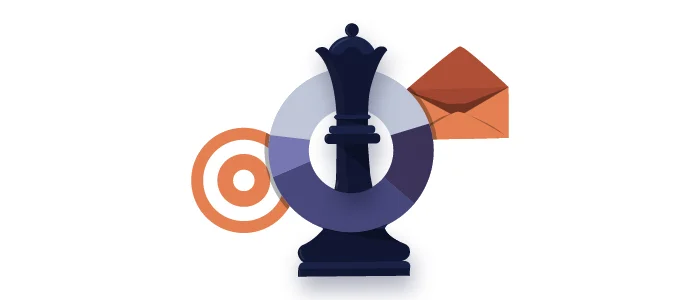
We have discussed retargeting until now. So, let’s move along and see how to set up a retargeting campaign:
1. Choose the Right Retargeting Platform
First, decide which advertising platforms you’ll use. Popular options include Google Ads, Meta Ads (Facebook/Instagram), LinkedIn, or display networks. Each platform offers unique features, so select the one that best aligns with your business goals and target audience.
2. Set Clear Objectives
Before diving into the campaign, clarify your goals. Are you aiming to increase brand awareness, drive sales, or reduce cart abandonment? Setting specific objectives will help guide your decisions throughout the campaign.
3. Create Segmented Audiences
Break your audience into smaller groups based on what they did on your website or app.
For example, someone who added a product to their cart but didn’t check out should be in a different group than someone who just visited your homepage. This way, you can show each group more personalized ads that match their level of interest.
4. Use Dynamic Ads
Dynamic ads are a powerful tool in retargeting campaigns. These ads automatically adjust based on the user’s previous actions, showing them the product or service they viewed or added to their cart. This tailored approach increases the relevance of your ads and significantly boosts conversion rates.
5. Monitor and Optimize
Once your campaign is live, monitor its performance regularly. Look at key metrics like click-through rates (CTR), conversions, and return on ad spend (ROAS). If certain ads or audiences aren’t performing well, make adjustments.
Retargeting is ongoing, and optimization is crucial to improving results over time.
6. Test and Experiment
Try various ad creatives, messages, audience segments, and bidding strategies. Running A/B tests helps you discover what truly connects with your audience. The insights you gain will guide you in refining your ads for the best possible performance.
Having covered the basics of setting up a retargeting campaign, it’s time to take things to the next level. We’ll review key best practices to help you build smarter, more effective campaigns that deliver results.
Best Practices for Creating Retargeting Ads
1. Define Your Retargeting Goals
If your goal is awareness, retargeting campaigns are the way to go. As a result, you’ll re-engage with your visitors and showcase relevant products or services. In this case, focus on metrics such as impressions and engagements; these campaigns are the first step toward conversions.
For conversion-focused goals, such as completing a form, downloading an eBook, or scheduling an appointment, retargeting campaigns aim to drive specific actions measured through clicks, form submissions, or cost-per-lead.
Aiming to reduce cart abandonment is tough, but it’s possible. You can use retargeting to solve this; it 100% matters how you do it. If possible, pair it up with a discount, a promo, or any other incentive to steer the wheels. If you close the deal, you can move users along the flywheel and continue with a nurturing campaign.
Retargeting campaigns can also serve various goals, such as guiding customers through the buyer’s journey, introducing new products, or boosting customer lifetime value. There are plenty of options to align with your overall marketing objectives.
2. Craft Tailored Retargeting Ads
Using generic, one-size-fits-all retargeting ads often results in poor performance. On the other hand, personalized ads that are tailored to specific interests and behaviors significantly boost conversions. These customized messages build trust and relevance, making users more likely to engage and take action.
3. Optimize Your Landing Page
The landing page should match the ad; reread it carefully. Maintaining a consistent brand, image, and ads reinforces to your prospects that you are trustworthy.
Not to mention that when you send prospects to a specific landing page, you limit access to other parts of your entire brand and website. Thus, the prospect’s attention is where you want it to be, which could compel users to buy.
4. Adjust Your Bidding, Frequency, and Ad Placements
Balancing your bidding budget, ad frequency, and placement is essential for a successful campaign. Here’s why:
If your bidding is too low, your retargeting efforts may only reach part of the buyer’s journey, limiting your results. The type of product or service you’re offering also plays a role—selling clothing differs from offering an SSP platform for publishers.
Ad frequency and placement are equally important. To avoid ad fatigue, make sure you’re targeting the right audience based on strong customer segmentation. To optimize your campaigns, test different combinations until you find what works best. You can also set frequency caps to limit how often your ad is shown to the same user.
5. Target and Segment Your Audience
In simple terms, using a pixel on your website helps you create an audience, yet is this your target audience? So, ensure that those on your list are further segmented based on their interest in your brand.
Be sure to divide your audience into groups based on behavior, interests, demographics, and other details that offer vital insights into your audience. As a result, you will create highly personalized ads that speak to their tribes and increase your conversions.
Common Retargeting Mistakes to Avoid
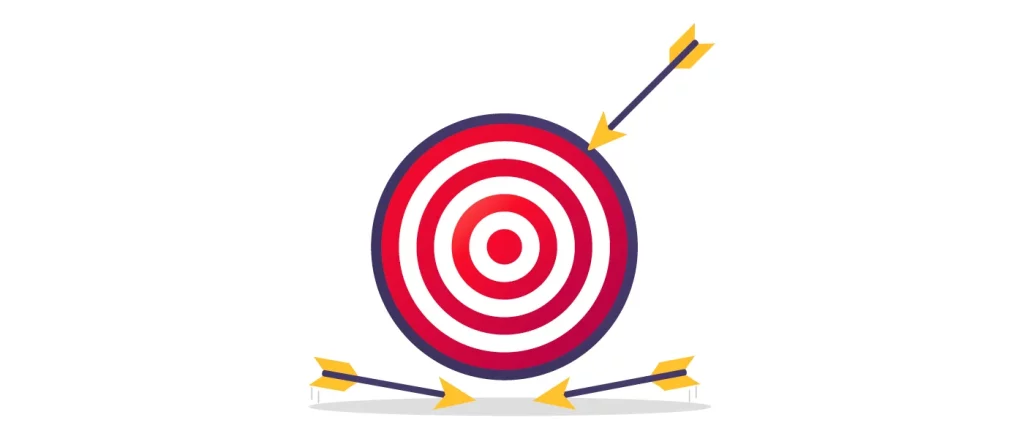
1. Confusing Retargeting with Remarketing
Many people mix up retargeting and remarketing, but they’re different strategies.
Retargeting means showing paid ads to people who have already visited your website or used your app. For example, if someone looks at a product on your site but doesn’t buy it, they might later see it in an ad on Facebook or Google.
On the other hand, remarketing is typically done through email marketing, targeting people who have already interacted with your business, like customers or subscribers.
For example, suppose someone adds items to their cart but doesn’t complete the purchase. In that case, you can send them a reminder email with a personalized message, perhaps even including a discount to encourage them to finalize the transaction.
Use retargeting to bring potential customers back through ads, and use remarketing to follow up with people through email.
Neglecting Mobile Optimization
Over 60% of web traffic comes from mobile devices, so optimizing your ads and landing pages for mobile users is essential.
If you don’t, you risk losing a significant part of your audience. Common mistakes include ads that appear fine on desktops but get cut off on mobile, slow-loading landing pages, and complex forms to fill out on small screens. Ensuring your mobile-friendly content is key to capturing these users and boosting conversions.
Ignoring Frequency Caps
Ignoring frequency caps can hurt your retargeting efforts. If users see the same ad too often, they may get frustrated or simply ignore it, a problem known as “banner blindness.” This can damage your brand’s image and make it seem pushy or desperate, which lowers trust.
Additionally, you waste your budget by showing ads to users who have already decided rather than targeting new prospects more likely to convert. Setting frequency caps ensures your ads reach the right audience without bombarding them.
Including a Vague CTA (Call-to-Action)
A strong Call-to-Action (CTA) is key to turning interest into action. A vague CTA can confuse users or make them lose interest, which lowers your chances of getting conversions.
Examples like “Click Here,” “Learn More” (without any context), or just “Submit” don’t tell users what they will get or why they should act. Instead, clear and action-focused CTAs like “Get Your Free Quote,” “Download the Free Guide,” or “Add to Cart and Save 15%” tell users exactly what they’ll get and encourage them to act.
Ensure your CTA matches the user’s intent and where they are in the buying journey, whether browsing, comparing products, or ready to purchase.
The Future of Retargeting: Trends and Privacy Considerations
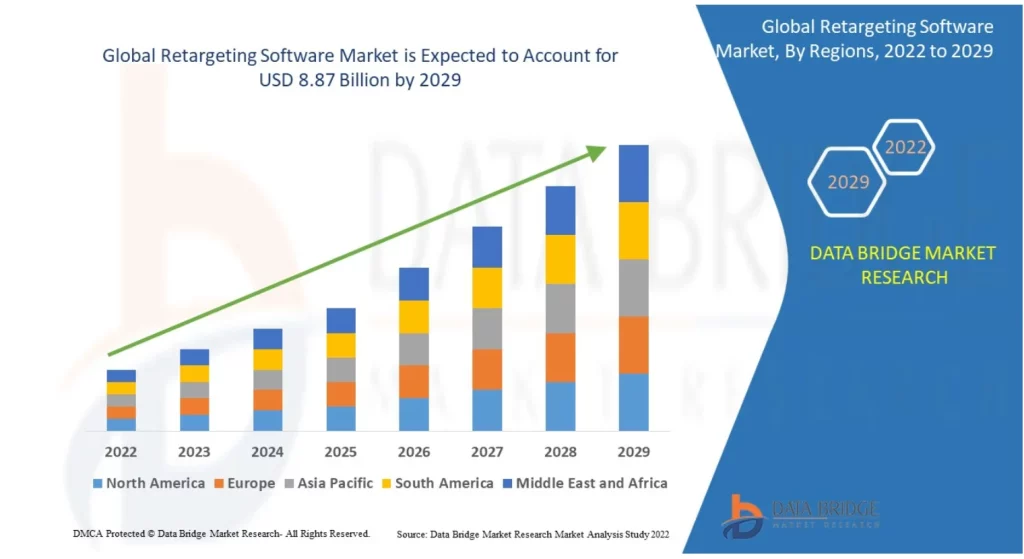
Retargeting is evolving quickly, and staying ahead means understanding emerging trends and growing privacy concerns. The global retargeting software market is expected to reach $8.87 billion by 2029, highlighting how vital it will continue to be.
Here are the key developments to keep in mind:
1. Cookieless Tracking
As third-party cookies disappear, which are already blocked in browsers such as Safari and Firefox and will soon be blocked in Google Chrome, traditional retargeting methods will become less effective.
That’s why marketers are shifting toward more privacy-friendly solutions. One of these is first-party data, which means collecting information directly from users when they sign up, purchase, or interact with your website.
Another smart approach is server-side tracking, which collects user data through your server instead of their browser, making it more reliable and privacy-compliant.
Lastly, contextual targeting is becoming popular again. This method shows ads based on the content of the page someone is reading, not their past browsing history, thus protecting user privacy while still delivering relevant ads.
2. AI-Powered Personalization
Artificial Intelligence is revolutionizing retargeting, making it more innovative and effective. Here’s how:
- Predicting user behavior: AI helps you understand what users will likely do next, allowing you to reach them at the right time.
- Real-time personalization enables you to show ads tailored to each person’s interests and behavior, ensuring relevance.
- Optimizing ad frequency and placement: AI automatically adjusts how often and where your ads appear, helping you achieve better results without wasting your budget.
3. Omnichannel Retargeting
The modern customer journey isn’t linear. Users might find your brand via Instagram, visit your site from their laptop, compare prices on their phone, and convert days later through a display ad.
Omnichannel retargeting ensures your message follows them across touchpoints without being annoying.
FAQ
The cost of a retargeting campaign depends on your marketing budget and the platform’s pricing model. Most retargeting platforms offer two standard pricing models: CPM (Cost Per Mille) and CPC (Cost Per Click).
Display ads are broad and target all users who fit specific demographics or interests, while retargeting targets people who have already interacted with your brand.
A retargeting strategy is a marketing method that uses ads to reconnect with people who have already visited your website, used your app, or engaged with your content. The goal is to remind them of your brand and encourage them to take the next step, like purchasing or signing up.
Some popular retargeting tools include Google Ads, Facebook Ads Manager, and AdRoll. These platforms make it easy to set up and manage retargeting campaigns.
Final Thoughts
So, what is retargeting? In today’s digital landscape, where 50% to 98% of online shopping carts are abandoned, retargeting is one of the most effective ways to re-engage potential customers.
Through pixel-based tracking, AI-powered personalization, and omnichannel delivery, you can stay visible to users and guide them back toward conversion in a natural, not intrusive way. As third-party cookies disappear and privacy standards shift, now is the perfect time to embrace smarter, more strategic retargeting.
Ready to turn lost traffic into loyal customers? Start building your retargeting strategy today.